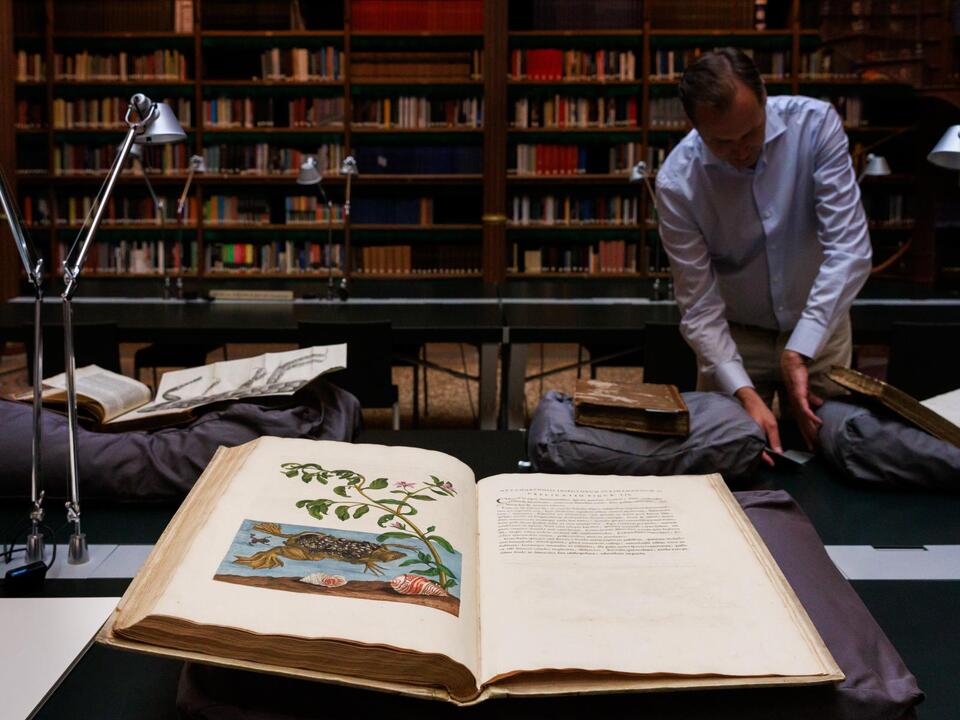Physical Address
304 North Cardinal St.
Dorchester Center, MA 02124
Physical Address
304 North Cardinal St.
Dorchester Center, MA 02124

More than three centuries after embarking on a perilous transatlantic journey to study butterflies, a rare copy of Maria Sibylla Merian’s hand-coloured masterwork is returning to Amsterdam. The Rijksmuseum, housing over half a million books on art and history, has recently acquired a first-edition copy of Metamorphosis of the Insects of Suriname (Metamorphosis Insectorum Surinamensium). This acquisition is a testament to the peak of 18th-century book production. At that time, the Dutch Republic was famously known as “the bookshop of the world.”
Standing more than half a meter tall and adorned with 60 lushly coloured plates, Metamorphosis introduced the broader public to the transformation of tropical insects from egg to adult. Merian and her daughters produced about 200 copies from 1705, but today only an estimated 67 survive, and even fewer with coloured illustrations. “It’s one of the most fascinating books in natural history that we know,” remarked Alex Alsemgeest, the curator of library collections at the Rijksmuseum. What also stands out, he noted, is that Merian managed every aspect of the book’s production herself—from her voyage to Suriname to its commercial distribution across Europe.
With its meticulously detailed illustrations, Metamorphosis is not just an artistic achievement but also a scientific one. It represents a time when disciplines weren’t rigidly divided. However, it also holds a narrative about Dutch colonial history. Merian documented the local names of the flora and fauna she studied and credited local people for their assistance, though she didn’t name them individually.
Merian’s personal story is equally captivating. At the age of 52 and freshly divorced, she set off on a self-funded voyage to Suriname in 1699, driven by an insatiable curiosity about insects. Born in Frankfurt, she learned to paint in her stepfather’s workshop and developed a fascination for silkworms, moths, and butterflies. After marrying one of her stepfather’s apprentices, she had two daughters and settled into a comfortable life in Nuremberg, where she bred and sketched caterpillars, publishing renowned books about local plants and insects.
At the time, many still believed that insects spawned spontaneously from dirt. Although Merian wasn’t the first to document the lifecycle of insects from eggs to adulthood, her artistic talents helped convey the message to a wider audience, explained Alsemgeest. Described by late historian Natalie Zemon Davis as “curious, wilful” and “a harder person to pin down” than her contemporaries, Merian left her husband to join a strict Protestant sect in Friesland before establishing a business in Amsterdam.
In Amsterdam, she found in cabinets the vibrant butterflies of Suriname, a Dutch colony until 1975 on the northern coast of South America. She moved there with her younger daughter, Dorothea, and criticized the Dutch settlers for focusing solely on sugar, ignoring the land’s potential for diverse crops. While she didn’t write much about human activities, she observed the cruelty faced by enslaved women and noted that some used a plant to induce abortions, explaining that this would allow their children to be born free in their own homeland.
Her book captures the beauty and brutality of nature, featuring some uncomfortably realistic creepy-crawlies. The first illustration shows cockroaches invading an unripened pineapple, a status symbol in Europe at the time. Another image portrays a tarantula attacking a hummingbird, and Merian is credited with coining the Dutch name for the creature, vogelspin (bird-spider).
Initially, her work was dismissed as fanciful. “In the 18th century, people thought, ‘that’s what you get when you send a woman to tropical places. She probably made that up,’” Alsemgeest recounted. Yet, scientists later confirmed her findings. The spider plate is a prime example of Merian’s keen observational skills, he added. “She was a really good observer.”
Source: The Observer



